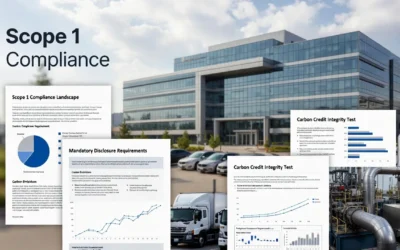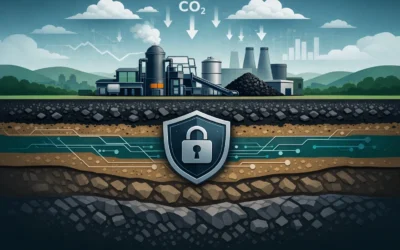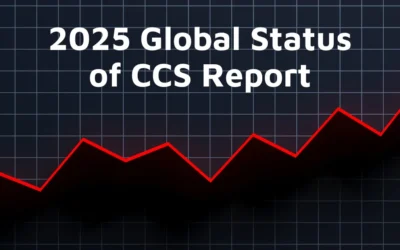Additionality is what makes carbon credits actually work – it’s the key to real climate impact, not just empty promises. Dynamic Carbon Credits focuses on high-integrity solutions like biochar, plant-based direct air capture (DAC), and regenerative agriculture to help Fortune 500 companies hit their sustainability goals without falling into greenwashing traps.
Bill Ickes
In the sprawling, jargon-filled world of carbon markets, one term reigns supreme: additionality. It’s the golden standard, the litmus test that separates meaningful climate action from hollow greenwashing. And yet, additionality is often misunderstood, misapplied, or outright ignored in the rush to offset emissions. Enter Dynamic Carbon Credits, a company laser-focused on high-integrity carbon removal solutions that don’t just meet the additionality bar—they vault over it. With a portfolio that includes cutting-edge technologies like biochar, plant-based direct air capture (DAC), and regenerative agriculture, Dynamic Carbon Credits is rewriting the rules of what carbon credits can and should be.
But what exactly is additionality, and why does it matter? More importantly, how does Dynamic Carbon Credits ensure that its projects deliver the real, measurable, and game-changing climate benefits that Fortune 500 companies are increasingly demanding? Let’s dive into the science, the strategy, and the stakes.
What is Additionality, and Why Should You Care?
Imagine this: A company claims to be carbon-neutral because it purchased carbon credits from a wind farm in a region where renewable energy is already mandated by law. The wind farm would have been built anyway, with or without the company’s financial support. In this scenario, the carbon credits are essentially meaningless. They don’t represent additional emissions reductions; they’re just a clever accounting trick.
This is the crux of additionality. For a carbon credit to be legitimate, it must represent emissions reductions or removals that wouldn’t have happened without the project—and, crucially, without the financial incentive provided by selling carbon credits. It’s a deceptively simple concept, but one that requires rigorous analysis and verification to get right.
Dynamic Carbon Credits has made additionality its North Star.
“We’re not interested in low-cost, low-integrity offsets that fail to move the needle on climate change,” says the company’s founder, Beau Parmenter. “Our mission is to deliver high-impact, high-integrity carbon removal solutions that Fortune 500 companies can trust.”
The Dynamic Carbon Credits Portfolio: A Masterclass in Additionality
Dynamic Carbon Credits doesn’t just dabble in carbon removal; it specializes in high-integrity solutions that are scientifically proven, financially viable, and environmentally transformative. Here’s a closer look at the company’s flagship offerings:
Biochar: Turning Waste into Carbon Gold
Biochar is a fascinating material—essentially charcoal produced by heating organic waste (like agricultural residues) in a low-oxygen environment. When applied to soil, biochar locks away carbon for centuries while improving soil health and agricultural yields. It’s a win-win for farmers and the planet.
But here’s where additionality comes in: Producing biochar isn’t inherently profitable. Without revenue from carbon credits, most biochar projects wouldn’t exist. Dynamic Carbon Credits ensures that its biochar projects are rigorously vetted to meet additionality criteria. The result? Every ton of biochar represents a genuine, measurable reduction in atmospheric CO₂.
And here’s the kicker: Biochar offers a cost-effective solution compared to many other carbon removal technologies. Dynamic Carbon Credits’ biochar projects strike the perfect balance between affordability and integrity, making them an attractive option for companies looking to balance their carbon budgets without compromising on quality.
Plant-Based Direct Air Capture (DAC): Harnessing Nature’s Genius
Forget the energy-intensive machines and sky-high costs of traditional DAC systems. Dynamic Carbon Credits takes a radically different approach, leveraging the oldest and most efficient carbon removal technology on Earth: biosynthesis. By using fast-growing plants to capture CO2 directly from the atmosphere, Dynamic Carbon Credits’ plant-based DAC projects offer a scalable, sustainable alternative to mechanical systems.
Here’s why this matters: Mechanical DAC systems often come with a hefty price tag—upwards of $1,200 per ton of CO2 removed—and require enormous amounts of energy to operate. In contrast, plant-based DAC is not only more cost-effective but also inherently renewable. The captured carbon can be stored in long-term solutions like biochar or integrated into regenerative agricultural practices, ensuring that it stays out of the atmosphere for decades or even centuries.
And, of course, additionality is baked into the model. These projects wouldn’t exist without the financial support provided by carbon credits, making them a textbook example of high-integrity carbon removal.
Regenerative Agriculture: Farming for the Future
Regenerative agriculture is more than a buzzword; it’s a revolution in how we grow food. By adopting practices like cover cropping, reduced tillage, and agroforestry, farmers can sequester carbon in soil while improving biodiversity and water retention.
But here’s the catch: Many farmers lack the financial resources to transition to regenerative practices. Carbon credits provide a crucial incentive, making these projects financially viable. Dynamic Carbon Credits works closely with agricultural communities to ensure that its regenerative agriculture projects meet strict additionality standards. The result? Healthier soils, more resilient farms, and a healthier planet.
Why Additionality Matters for Fortune 500 Companies
For Fortune 500 companies, carbon credits are no longer just a nice-to-have; they’re a business imperative. With investors, regulators, and consumers demanding action on climate change, companies are under immense pressure to reduce their carbon footprints. But not all carbon credits are created equal.
Low-cost offsets from projects that fail additionality tests can backfire spectacularly, leading to accusations of greenwashing and reputational damage. High-integrity credits, on the other hand, offer a triple win: They help companies meet their sustainability goals, demonstrate genuine climate leadership, and contribute to global emissions reductions.
Dynamic Carbon Credits understands these stakes better than anyone. That’s why the company goes above and beyond to ensure that its projects deliver real, measurable, and additional climate benefits. “We’re not just selling credits; we’re selling trust,” says the founder. “When a Fortune 500 company buys from us, they can be confident that their investment is making a real difference.”
The Transparency Factor: Blockchain and Beyond
In an industry plagued by opacity and double-counting, transparency is key. Dynamic Carbon Credits leverages blockchain technology to provide an immutable record of every transaction. Each credit is traceable back to its source project, ensuring that buyers know exactly what they’re getting.
This level of transparency is particularly important for additionality. By documenting the financial and operational details of each project, Dynamic Carbon Credits can prove that its projects wouldn’t exist without the revenue from carbon credits. It’s a level of rigor that sets the company apart in a crowded and often murky market.
The Road Ahead: Scaling High-Integrity Carbon Removal
The global carbon market is expected to grow exponentially in the coming decades, driven by corporate net-zero commitments and tightening regulations. But as demand for carbon credits skyrockets, so does the risk of low-quality offsets flooding the market.
Dynamic Carbon Credits is committed to scaling its operations without compromising on integrity. The company is investing in new technologies, expanding its project portfolio, and working with third-party verifiers to ensure that every credit meets the highest standards of additionality.
For Fortune 500 companies, this is welcome news. As the pressure to decarbonize intensifies, the need for high-quality, high-integrity carbon credits will only grow. Dynamic Carbon Credits is poised to meet this demand, offering solutions that are as innovative as they are impactful.
Why Additionality is the Future of Carbon Offsetting
In the race to combat climate change, additionality isn’t just a buzzword; it’s a necessity. Without it, carbon credits risk becoming little more than a shell game, shifting emissions around without reducing them. Dynamic Carbon Credits is leading the charge to ensure that every credit sold represents a real and additional climate benefit.
With a portfolio that includes biochar, plant-based DAC, and regenerative agriculture, the company is setting a new standard for what carbon credits can achieve. For Fortune 500 companies looking to make a meaningful impact, Dynamic Carbon Credits offers more than just offsets; it offers a pathway to genuine climate leadership.
As our founder, Beau, puts it: “The world doesn’t need more empty promises. It needs action. And that’s what we’re here to deliver.”






